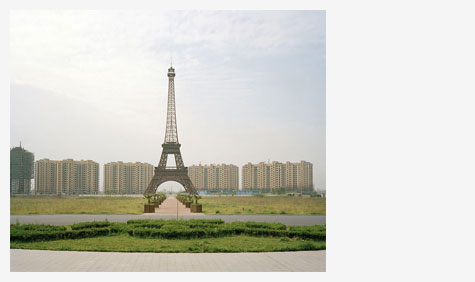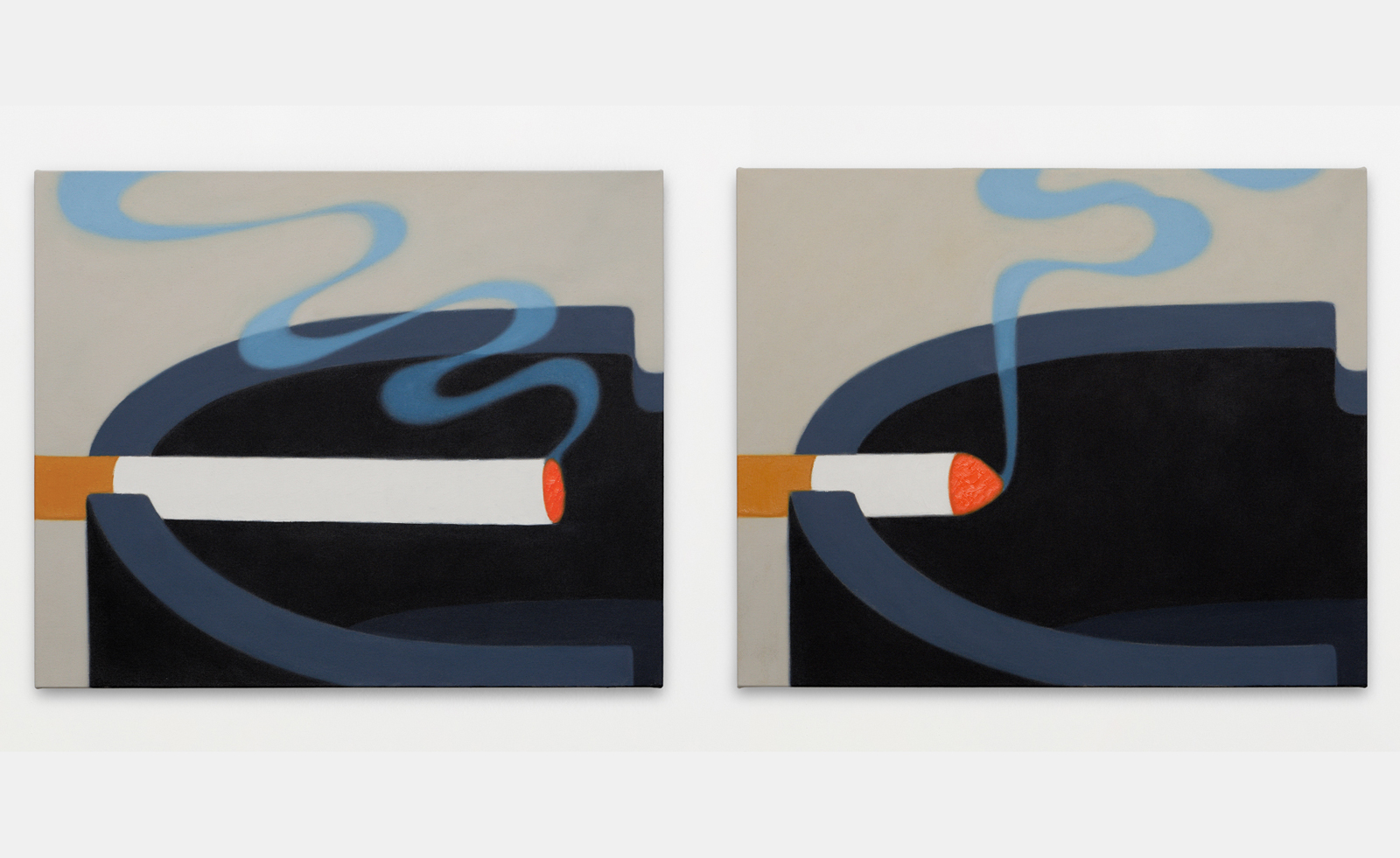Urban Fictions by Richard Rowland, Shanghai

One of the more curious architectural projects underway in Shanghai is called ‘Nine Towns, One City’ – a scheme to create nine satellite towns for wealthy middle class Shanghainese, with the architecture and planning based on different European models.
Including English, French, Dutch, Swedish, Italian and German pastiches, the architecture is more than a little disorientating. The effect of walking through these familiar districts, many still under construction and eerily unpopulated, is like strolling onto a film set. But unlike their balsa wood counterparts these satellites towns are very real indeed – bricks and mortar, running water, trees and grass surreally manicured and just waiting for inhabitants.
The English photographer Richard Rowland spent six weeks photographing them.

See a selection of Richard Rowland's photographs from his time in Shanghai
The project was funded by the Arts Council England and he’s working on a book with FAR Architecture Center Shanghai, a Dutch organisation based in Shanghai. In 2010 the photographs will be exhibited at the Light House Media Centre in Wolverhampton. In the meantime he provided us with a selection of his photographs and explained his personal take on the phenomenon.
When did you first come across the European-themed towns?
I first saw one of the developments, known as Thamestown, on Paul Merton’s series on China. I’d been aware of China’s willingness to adopt and adapt other country’s architectural styles, but through my research I came across a whole series of western-style towns, mainly European, that have been appearing in and around Shanghai over the past decade.
Wallpaper* Newsletter
Receive our daily digest of inspiration, escapism and design stories from around the world direct to your inbox.
What was the experience of photographing them like?
Extremely varied in that they are all at different stages. Some are largely complete, although in Shanghai it seems the building never quite ceases, whilst others are more of a patchwork of developments and have further stages planned. As a westerner, I could not help but experience a sense of the uncanny whilst travelling through these faux towns, where street scenes, embedded in my memory either through personal experience or, say, television were re-presented in front of me. I’m interested in what Umberto Eco describes as ‘the flattening of the real against fake’ in these reproductions and how the photograph adds to this illusion.
Why do you think the trend began?
Many are part of a grand scheme known as ‘Nine Towns, One City’, to create nine such satellite towns to house the emerging wealthy middle classes (up to half a million people), but others such as ‘Little Paris’ have developed independently of this scheme. I think you have to bear in mind that most Chinese have never left their country and certainly not to somewhere as exotic as Europe. For many, this is a way of ‘experiencing‘ something of Europe, bound up in notions of western desire and dreams of a utopian ideal. These ideals are being propelled by a period of unsurpassed prosperity that welcomes both success and excess.
Are there lots of architect firms that build them or does one firm specialise in one style?
Certainly with the ‘Nine Towns’ projects, firms from each nation pitched for the schemes. Interestingly, Albert Speer Jnr, namesake and son of Hitler’s architectural visionary, heads the German town of Anting. It’s hard not to see the irony in this!
Who lives in them?
Mainly the emerging wealthy business classes. However, the term ‘live’ hardly feels appropriate here. Although most have been purchased, often even before construction begins, the majority remain empty and the towns as a whole are mainly peopled by those involved in construction, sales and maintenance, alongside the inevitable teems of uniformed guards. This further creates a sense of the unreal – empty, reconstructed spaces, not unlike a film-set that create something of the hyperrealist reproduction.
How does the local culture differ in each of them?
I don’t think the culture does really. Each development is designed to largely accommodate the new business classes. I think these places say more about the uniformity in culture within these towns than revealing any particular disparity.
What does it say about Shanghainese attitudes to their own cultural heritage that they’ve built towns based around historic European styles of architecture?
China, and particularly Shanghai, has a history of architectural pastiche and wholesale adoption of western styles, due largely to its colonial past, and in certain ways I see these projects as merely an extension of this. Without the same concerns for a design lineage or historical authenticity that is certainly true of the UK, these new towns seem caught between futuristic design and European nostalgia.
How long did you spend in Shanghai photographing the towns?
I made two trips totalling six weeks.
What if anything do you feel you’ve learnt from the project?
I’ve come away with at least as many questions as answers, but, for me, this is what I look for in an art piece. The project is not photojournalistic or strictly documentary in nature and I’m more interested in the ambiguity here, rather than creating a defining story that has all the answers. I’m looking for what the work reveals about China at this point in history under this set of conditions.
-
 All-In is the Paris-based label making full-force fashion for main character dressing
All-In is the Paris-based label making full-force fashion for main character dressingPart of our monthly Uprising series, Wallpaper* meets Benjamin Barron and Bror August Vestbø of All-In, the LVMH Prize-nominated label which bases its collections on a riotous cast of characters – real and imagined
By Orla Brennan
-
 Maserati joins forces with Giorgetti for a turbo-charged relationship
Maserati joins forces with Giorgetti for a turbo-charged relationshipAnnouncing their marriage during Milan Design Week, the brands unveiled a collection, a car and a long term commitment
By Hugo Macdonald
-
 Through an innovative new training program, Poltrona Frau aims to safeguard Italian craft
Through an innovative new training program, Poltrona Frau aims to safeguard Italian craftThe heritage furniture manufacturer is training a new generation of leather artisans
By Cristina Kiran Piotti
-
 Henni Alftan’s paintings frame everyday moments in cinematic renditions
Henni Alftan’s paintings frame everyday moments in cinematic renditionsConcurrent exhibitions in New York and Shanghai celebrate the mesmerising mystery in Henni Alftan’s paintings
By Osman Can Yerebakan
-
 Cui Jie revisits past utopian architectures in her retro-futuristic cityscapes
Cui Jie revisits past utopian architectures in her retro-futuristic cityscapesCui Jie responds to the ‘Cosmos Cinema’ theme of the Shanghai Biennale 2023
By Finn Blythe
-
 13th Shanghai Biennale reaches a climax at Power Station of Art
13th Shanghai Biennale reaches a climax at Power Station of ArtThe final phase of the 13th Shanghai Biennale culminates with a mammoth show examining our entanglement with climates, ecosystems and technologies
By Harriet Lloyd-Smith
-
 Is Beijing the next art superpower?
Is Beijing the next art superpower?With a boom in museums, galleries and art fairs fuelling the market, the Chinese capital is firing all creative cylinders
By Yoko Choy
-
 Brushed-up bronze: Design MVW present ’XiangSheng’ at Galerie BSL, Paris
Brushed-up bronze: Design MVW present ’XiangSheng’ at Galerie BSL, ParisBy Sujata Burman
-
 What is contemporary?: Gucci ponders big questions at Shanghai’s Minsheng
What is contemporary?: Gucci ponders big questions at Shanghai’s MinshengBy Alice McInerney
-
 Random International’s largest Rain Room to date takes Shanghai by storm
Random International’s largest Rain Room to date takes Shanghai by stormBy Sam Rogers
-
 The 10th Shanghai Biennale ponders a post-industrial China
The 10th Shanghai Biennale ponders a post-industrial ChinaBy Catherine Shaw